I’ve written this guide on how to go vegan because I wish I had this resource when I went vegan in 2014. I’ve learned a lot in five years, especially being a content creator and author on the topic for most of my time as a vegan.
Let’s talk more about you, though. You’re likely reading this because:
- You’re considering becoming vegan—maybe recently, or for a while. If you are, that’s awesome!
- Perhaps you’re already vegan, but you’re looking for some extra inspiration to stay consistent.
- You don’t have plans of being vegan but are just curious to see what I have to say.
Regardless of where you’re at in your journey, my goal is to be brutally honest with you about what it takes to go vegan. This isn’t another post glorifying the vegan movement and talking about how easy it is to transition. Although it’s hard at times not to “sell” veganism because of what’s at stake (animals, environment, etc.). But hopefully, by being open with you, you’ll also be open to seeing that it’s not so hard after all.
In the end, your journey is your journey. So take as much or as little out of this post as you like.
I should also mention that I plan on updating this post regularly. It’s likely to evolve over time as I think of more resources and stories to share. I suggest you bookmark this page for future reference.
Lastly, if you’ve recently gone vegan, I’d love for you to share your experiences on what’s worked and what hasn’t in the comments at the end of this post. My perspective is my perspective only, and your input will fill in the gaps and provide more relatable examples to anyone who stumbles across this post.
Anyway, without further ado, here’s my epic guide on how to go vegan. Enjoy.
The importance of mindset when going vegan
When talking about fundamentally changing your behaviour as it relates to veganism, we must start by developing the right mindset.
Sustainable change comes from a profound shift in mindset. So what does that look like?
What’s your reason for becoming vegan?
It’s difficult to talk about how to go vegan without addressing why you want to be vegan.
So why are you interested in becoming vegan?
Do you feel like it’s the right thing to do? Why? Why not? Try to remove your bias towards your familiar habits when asking yourself this question.
It’s easy to get caught up in the “yes, I know it’s a good thing to do, but…insert excuse/justification.”
At this point, get your thoughts out of your head and onto paper. This will help clarify your reasons for wanting to be vegan. List all of the benefits in dot points. Write down your objections as well.
If you need some help, refer back to the definition of veganism.
Try to keep an open mind about veganism
Being open is going to be vital for going vegan. Hanging on to reasons for not being vegan will hold you back. Here’s a quick little exercise to highlight some examples of how you can practice openness in your vegan journey.
| Closed | Open |
|---|---|
| “Vegan food doesn’t taste good.” | “How do I make vegan food taste good?” |
| “Vegan food is too expensive.” | “How can I go about finding affordable vegan food?” |
| “Being vegan is inconvenient.” | “How can I put systems in place to make veganism more convenient?” |
It’s simple. Each challenge is overcome by asking how. How can I make it work? So when being open, just ask yourself if you’re leading with how, and more often than not, you’ll find a way to overcome a closed mindset.
Managing your expectations of what it’s like to be vegan
I became vegan for the animals first and foremost. But I’d be lying to you if I said I didn’t expect some personal benefits that were promised by the internet. It’s common for vegan influencers to talk about all of the weight that they lost, their glowing skin, brighter eyes and nails, improved digestion, and better physical performance.
Not to say that these claims aren’t valid. In some situations, I’m sure people get these results from living a vegan lifestyle. But it wasn’t the case for me.
The thing is, I didn’t care that much. It was the pressure of upholding the expectations of a vegan lifestyle to others that got me down at times.
I felt that if I didn’t have some magical physical transformation, that non-vegans would discredit the vegan lifestyle altogether.
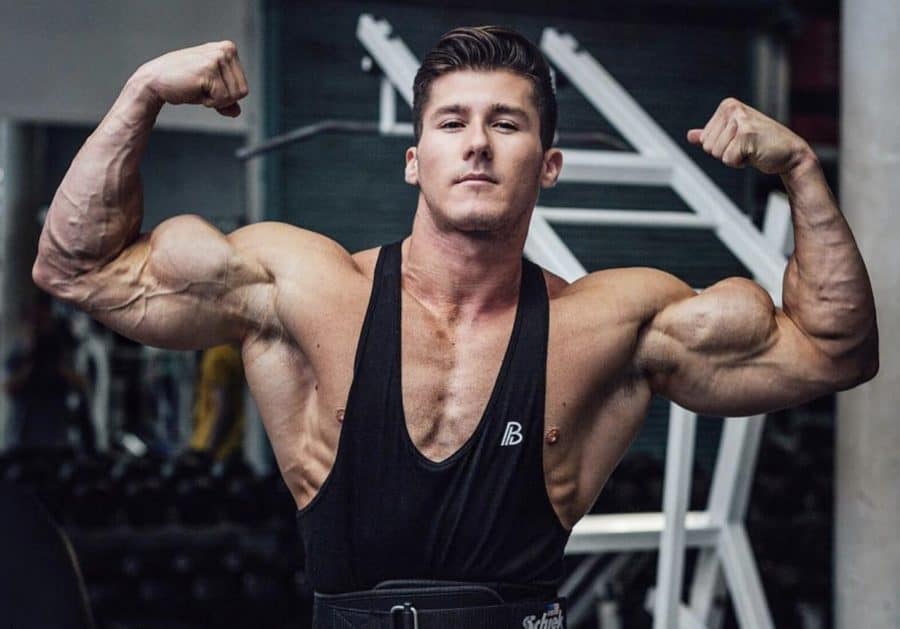
“I thought vegans were super fit?” While people may not say it to your face, that’s what they’re thinking.
So please, for your own mental health, remove the pressure of expecting so much from a plant-based lifestyle. Yes, there are certainly ways to get results, and you should absolutely go for it if it’s important to you. But the moment you get into the game of portraying the vegan lifestyle just to say “I told you so” is the moment you could set yourself up for major disappointment.
Also, be aware that there’s a trade-off for being vegan when it comes to food. Especially when you’re eating plant-based alternatives to animal-based products.
I know this may seem unusual to hear from a passionate vegan advocate. But vegan sausages in most cases don’t taste better than meat sausages. This is not the case for every type of food, but for the most part, it is.
Many of us vegans are so committed to defending and selling the fact that there isn’t a trade-off because we’re so excited about the increased variety of alternatives.
The quicker you realise there’s a trade-off in taste, the faster you’ll be able to accept that it’s worth it for the trade-off in saving animals and the planet.
Even better, every now and then you’ll come across a vegan alternative that genuinely outperforms the animal-based competitor. I mean it’s subjective, but without a doubt, I believe that the Vego Spread tastes better than Nutella. Yeah, I said it!
How to go vegan and remain sane
Kind of tied into the topic of mindset is the dark side of veganism. If your reason for becoming vegan is off the back of some rude awakening of the animal and environmental exploitation human beings are causing, you’re probably upset, angry, resentful. Or worse, you feel helpless.
This feeling of helplessness is thoughtfully described in our friend’s book, Vystopia: The Anguish of Being Vegan in a Non-Vegan World.
If you’re feeling this way, know that it’s common—hence a book is written on the topic. But through this feeling of vystopia could arise some other challenges for you.
Maybe you start being perceived by others as a preachy vegan because you’re so worked up about the situation.
Read more: 3 Reasons Why Vegans Are Hated: Is it Possible To Change This Perception?
Such passion (and understandably so) could hurt your personal relationships if you’re not careful. People in your life may feel threatened by you. I get it. The conversation becomes about your beliefs versus theirs when you’re trying to communicate facts on behalf of animals that can’t participate or defend themselves in your hot debate.
The way I’ve found to overcome this feeling is to continually reflect on what your life was like before you decided to become vegan.
In fact, I let myself reminisce positively about life before vegan. For example, I think about the foods I used to enjoy and how I used to consume freely.
As much as you need to create a vegan bubble around you, you also need to fight to stay connected with the non-vegan world. It helps you maintain empathy and relatability in these interactions, as hard as they can be.
Three different approaches to becoming vegan
There’s no right or wrong way to become vegan. It just matters that you get there.
Below are three conventional approaches to transitioning to a vegan lifestyle. Pick whichever one best suits your personality.
1. Go vegan on the spot
I’m a product of an overnight vegan. It sounds appealing and admirable to some, but honestly, this is just the way I do things. I’m an all or nothing type of person.
If you find that you’re comfortable with making drastic changes in your life, then this may be the best approach for you.
Your narrative goes from I’m an omnivore to I’m vegan now. Boom!
Friends and family were shocked. You embrace the rumours and the doubts of whether you’re going to last. Because that’s what you do.
However, if you’re not wired with the same “back against the wall” pride and determination, suddenly becoming vegan may not be for you. This approach comes with a lot of expectations and pressure from yourself and those around you.
It’s also arguably not that healthy for you to become vegan immediately. Most of us are creatures of habit, and we generally eat the same things all the time. So when you abruptly introduce a new diet, it’s only natural for your body to freak out as it tries to work out what to do with these different nutrients.
This is of course if you’re like me and going vegan also meant eating differently. If you’re someone like my wife Maša who was mainly vegetarian before becoming vegan, then this is not a big deal.
2. Go vegan gradually
If you’re naturally patient and want to take the time to listen to your body, then the gradual approach to veganism might be better suited for you.
This approach involves introducing more plant-based foods into your diet and slowly crowding out animal products in your life. It’s a great way to adjust your taste buds, your digestion and shopping habits for long-term sustainability.
The challenge with this approach, however, is the discipline required to fully transition to a vegan diet while still hedging with animal products.
And even when you eventually become vegan, would you be more lenient to yourself about your vegan commitments? For example, you claim to be vegan but will eat salmon at a restaurant on your wedding anniversary. Or you’re okay consuming backyard eggs, or honey.
Again, these are your choices, but with every decision to give yourself leeway, you risk confusing the vegan message with non-vegans. They see you identify as a vegan, yet your actions are different.
It’s important that if you take this approach, you set specific milestones and goals to become vegan, and not get stuck in a transition phase. Although. The fact that you are open to eating more plants is still helping animals. So let’s celebrate any progress! Just don’t confuse the message.
3. Go vegan through a challenge
This is perhaps my favourite approach of the three.
A vegan challenge is a set period in which you try a vegan lifestyle. You may have heard of Veganuary, where folks around the world try their hand at veganism at the beginning of the year in January.
There are also a bunch of free online challenges like this 7-day challenge that you can participate in.
By setting a challenge, you get the best of both worlds from the two previous approaches. You get to transition quickly, but you can also plan around your challenges and what you need to complete it.
There’s a sense of focus and accomplishment when you know that you’re trying something for a defined period.
Then at the end of your vegan challenge, you can decide whether you want to try it again for another period, or you might decide that it was easier than you expected and that you’ll keep going.
I had a similar experience when I decided to eat one meal a day. I started off intending to try it for 30 days, which then turned into a regular practice.
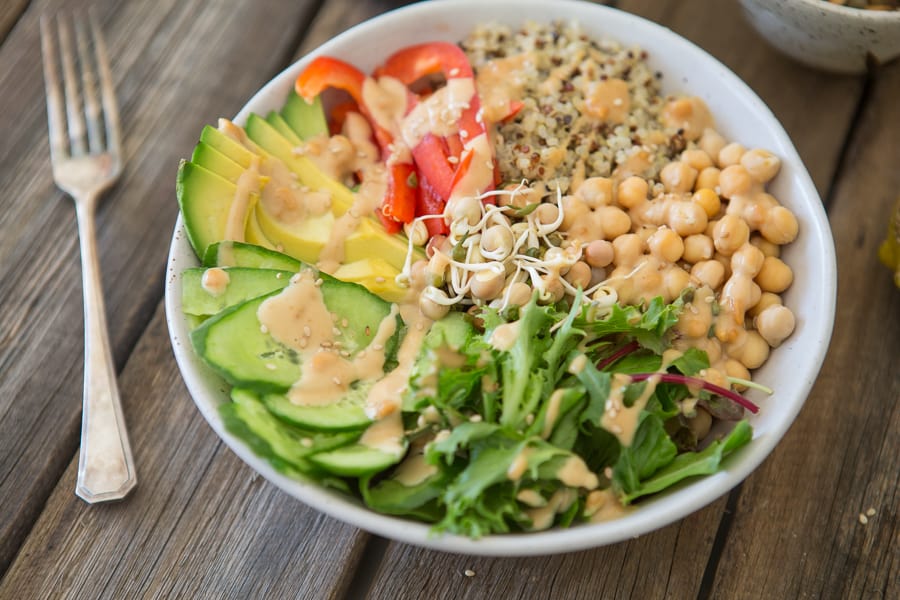
How to prepare vegan meals (in three steps)
If there’s one skill that is infinitely beneficial to anyone, it’s the ability to prepare and cook food.
I’m not naturally someone who enjoys cooking, although, in the last week I’ve prepared this, this, and this, and I’ve been really proud of the results.
There’s something special about sourcing ingredients and creating something tasty for yourself and your loved ones. So if there’s one thing to hype up in this post, it’s acquiring cooking skills.
But if you’re a struggler in the cooking department, I’ve outlined some steps below to help you get started with vegan meal prep.

Step 1 – Clear your pantry and fridge
When we first became vegan, it was paramount that we removed or at least reduced any potential temptations of animal products from our environment. This meant giving away frozen meat, cheese, sour cream, cows milk, you name it, to our families that consumed those products. This enabled us to start with a clean slate to rebuild our habits.
If you live with others who aren’t vegan, ask them if they would like your animal-based products. Do your best to get rid of as much as you can while respecting other people in your household.
When replenishing your pantry and fridge, keep things simple with your first shop. Don’t try to become a seasoned organic raw foodie overnight, as you’ll overwhelm yourself and burn out.
Go to your local grocery store and look to buy your kitchen essentials. This includes your oils, nut-milks, canned legumes, grains, fruits and vegetables. Try to buy organic where possible but don’t stress over it. Don’t let the quality of produce prevent you from getting started.
Over time, you can build up your pantry, but remember, if you want to start leaning, so do the bare minimum to get started.
Step 2 – Keep your meal rotation tight
This is such an important strategy when becoming vegan. It’s overwhelming to make such a change, particularly if you’ve been consuming animal products your whole life.
Where can I eat? Where do I buy food? How much will it cost? I can’t give up cheese!
Take a deep breath and get back to basics. In fact, it’s quite okay to be bored with your food choices when you’re transitioning. For example, we mostly ate wraps for the first couple of weeks. I personally ate wraps every day until I found my feet. I chose wraps because I liked the flexibility of changing the ingredients, e.g. Tempeh or tofu, rocket or lettuce, hummus or tahini etc. This might sound a little extreme, but for me, I needed to find a go-to meal that I could plan for and make quickly.
I recommend you find 2–3 recipes that have cheap ingredients, can be cooked in bulk and can be accessed quickly. This could include wraps, pasta, canned beans and rice, avocado on toast. Don’t worry so much about eating super healthy just yet, particularly if you’re new to cooking.
Step 3 – Expand your rotation
So after you’ve cleared out your environment and nailed the rotation of your go-to meals, it’s time to look at how you can add more recipes to your toolkit.
Watch YouTube videos, read blog posts, buy cookbooks, go to cooking classes, use all of your available resources to help you broaden your rotation.
When learning new recipes, be intentional about what you want to achieve. Unless you’re a foodie, you probably don’t want to be spending hours upon hours in the kitchen testing new recipes. Instead, think about how you can find one reliable recipe that you can confidently add to your rotation this week. Then the following week, and the week after that, until you have 5–10 go-to meals under your belt.
It’s at this point that you can start getting more creative with your cooking, but even then, you might find that you’re quite content with your rotation.
For example, my rotation is currently at five meals. Sure. I can cook other recipes, but these are five meals that I know will deliver. I’m taking my time to find the sixth recipe to add to my rotation.
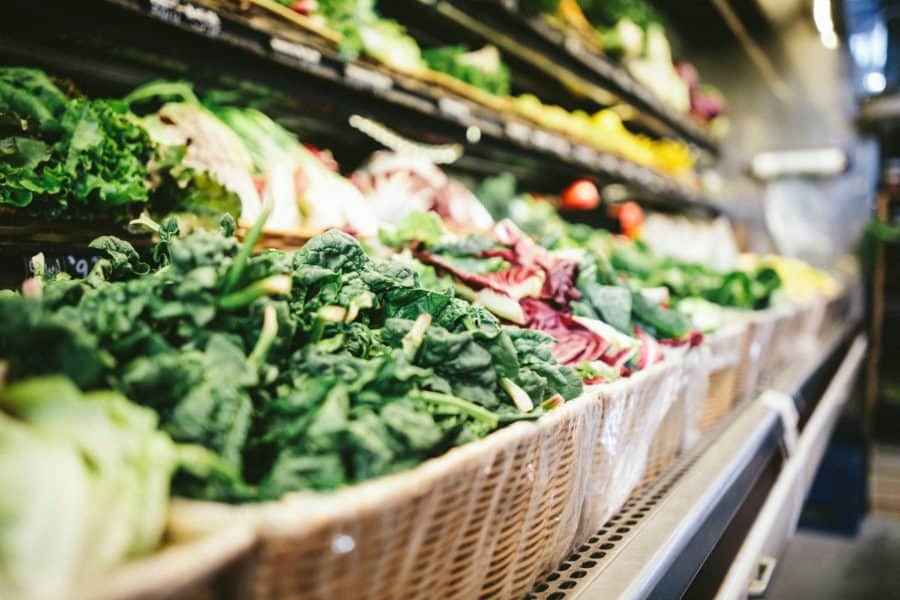
Reading labels
I nearly forgot to mention that in addition to learning how to build a small selection of recipes, you need to get more comfortable reading labels for ingredients.
Perhaps you already have this habit. But as a vegan, it’s essential. I remember how much it used to drive me crazy (before I was vegan) when Maša would pick up every product on the shelf and read each ingredient. I did not have the patience.
But on the rare occasion I go to the grocery store, guess what I’m doing? Reading labels.
What do you need to look for as a new vegan?
Generally speaking, you want to avoid honey or honey derivatives, milk derivatives, and fish sauce. Bonus points if you avoid ingredients with scientific names and numbers next to them. You can use websites like this one to help you work out if an additive is vegan or not.
And lastly, look out for “may contain” or “made in a warehouse that contains” insert animal product. Vegans will generally give these labels a pass, as brands can’t sometimes 100% claim to not have their product contain animal products despite not being on the ingredient list as they use a factory that produces products with animal-based ingredients.
So what I’m trying to say is if the bar of chocolate you’re eyeing down says it has milk, don’t buy it. But if it says, “it may contain milk solids” or “may contain traces of milk solids”, then it’s okay to consume.
Read more: Simple Vegan Grocery List For Beginners
Balancing health and comfort on a vegan diet
Much to the point from earlier in the post about expectations, there’s a common misconception that you’ll transform your health by becoming vegan.
I’m not a nutritionist nor a health professional. But I’m aware that your health results are dependent on various factors including your DNA, what you were eating before, your sleep, your mental health, your level of physical activity, nutrient deficiencies, chronic disease and so on.
One thing is clear though when you become vegan, and this is also true for non-vegans, you can decide to either eat well or not. It’s that simple.
On the one hand, you can embrace a whole-foods plant-based diet. That means avoiding processed foods and working with completely natural plants in your diet. I don’t think anyone will argue that this approach would be beneficial for your health.
The other option is indulging in vegan junk food. Which is consuming a growing list of processed vegan foods on the market.
Or if you’re like me and a large chunk of the population, you end up consuming a mix of healthy whole-foods and processed junk food.
What you eat in your transition to a vegan diet will largely depend on how you were eating before you became vegan. I think matching your current balance of nutrients when becoming vegan is reasonable and realistic.
You may put too much pressure on yourself to try to work with locally sourced plants when you haven’t done so in the past.
At the same time, becoming vegan is an excellent opportunity to reflect on your eating habits to date, and start to introduce more plants into your diet. Sure, vegan burgers, pizzas, ice cream and pies may feel familiar to you, but it’s not a great long-term strategy for your health.
The other thing that I found a little confusing when I became vegan is knowing the macronutrient profile of plant foods.
I’m sure most of us are familiar with this omnivore food pyramid.
However, now that you’re vegan the pyramid looks like this:
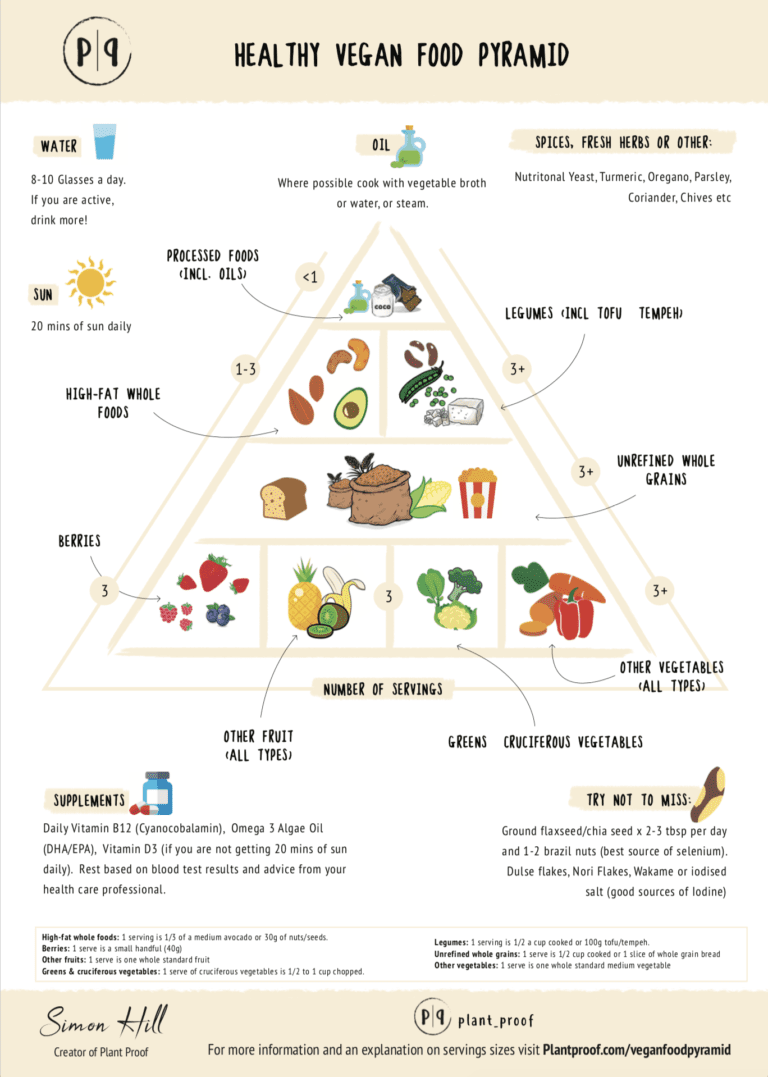
Make sure you learn these profiles as you seek a balanced diet from plants.
Supplements for vegans
I almost didn’t include a section about supplements in this post because it frustrates me. But then I realised that this wouldn’t be an ultimate guide without mentioning supplementation.
I find the topic annoying because before becoming vegan, almost nobody asked me about my nutrient levels. Growing up in a heavy meat-eating environment, I don’t think I ever got a blood test analysing my results.
Meanwhile, I ate poorly. Lots of plasticky white processed bread, toasties with an excessive amount of cheese, heavy West-African dishes, barbecued meat every other week. Barely any whole-food plant.
Read more: Can Vegans Eat Bread? What You Need To Know
Surely that would have been prime time to check my nutrient levels? But no one seemed to care.
Then the moment I became vegan and started eating considerably better, I got all these questions about getting enough nutrients. Protein, calcium, iron, B12. I mean, really?
It goes back to my previous point, whether you’re vegan or not, you either eat well or you don’t.
Whether you’re vegan or not, you need to stay connected to what your body needs.
Whether you’re vegan or not, you could probably benefit from some supplementation.
Okay with that rant over, EVERYONE should consider B12 and Vitamin D supplements.
B12 is found in our earth’s soil and is typically washed off our plants, so it’s naturally harder to come by. Even then, over the decades, our soils have been so depleted of nutrients due to many factors that you won’t get it even if you ate soil!
According to the National Institutes of Health, Vitamin B12 is naturally found in animal products, including fish, meat, poultry, eggs, milk, and milk products. However, even then, it’s probably not enough—as up to 15% of America’s population is B12 deficient.
The natural source of vitamin D comes from the sun. This should be reasonably easy to get if we all valued being out in direct sunlight for at least 30 minutes to an hour depending on where we live, but this is simply not how most of us get it.
For everything else, consult your doctor and get blood tests done to check your nutrient balances. Again, this is a beneficial exercise to do whether you’re vegan or not. From there, you’ll be able to tailor your vegan diet to address your needs or take supplementation if you need it.
Personally, I don’t take any supplements. I know I should. But I never established the habit before I was vegan, and I don’t have the habit after five years into veganism. So my poor habits remain consistent.
Maša, on the other hand, has always been more in tune with her body. Even before she was vegan, she supplemented when needed.
The choice is yours.
Tips for eating out when you first become vegan
Finding vegan-friendly food to eat out is dependent on where you live. Luckily, the vegan movement is growing, and savvy entrepreneurs are finding ways to meet the demand of the market by offering more vegan options.
For example, the most Australian membership club you could think of in my town now has a dedicated vegan menu. It’s the last place I expected to see vegan options, let alone a whole menu!
So be encouraged that times are changing.
But even then, you could benefit from some tools to help you find vegan food anywhere you travel.
Use Google Maps to find vegan eats
The first option is to use Google Maps. It’s a free tool that you can use on a computer or download the app on your phone.
If you have your location services turned on (so Google automatically knows where you are), just key in “vegan restaurants near me” and Google will try its best to find vegan-friendly restaurants in your area.
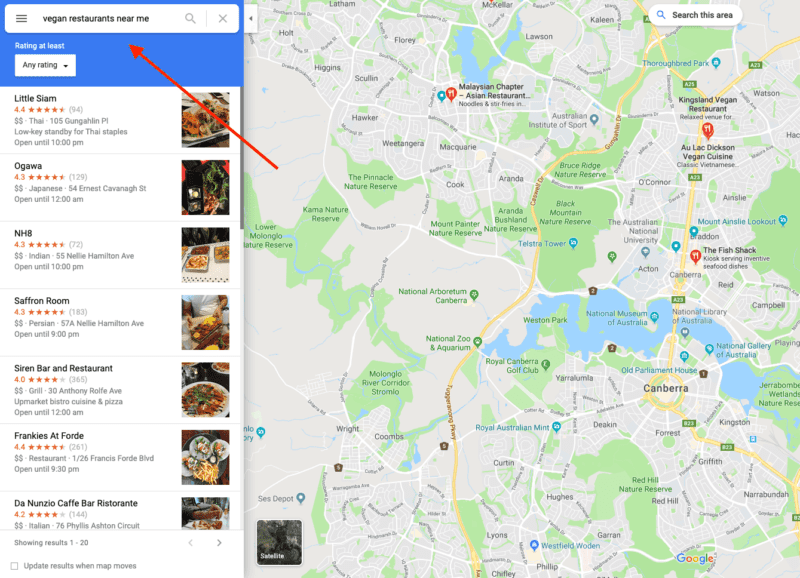
If you’re signed in to your Google account when using maps, you can also save restaurants into a list so you can come back to it later.
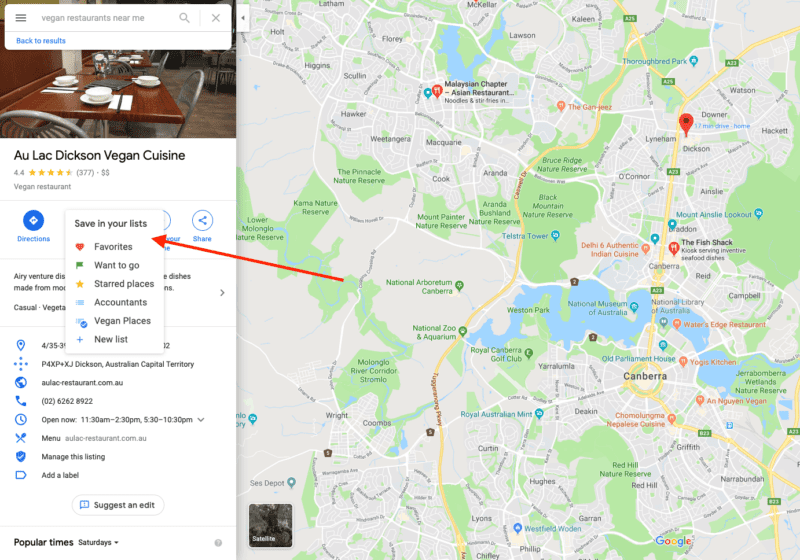
You can also use Google maps to find any restaurant in your area but then click on the link to the menu from their Google profile to see if there are any vegan options on the menu.
Use HappyCow to find vegan places to eat
HappyCow is an app dedicated to curating vegan-friendly eateries based on any location. It works similar to Google Maps, but it does the hard work of cancelling down the options for you.
What else is great about HappyCow is the community leaving feedback about their favourite restaurants. With an active rating and commenting system in place, you can quickly assess whether a restaurant is right for you. I mean, look at the welcome message you receive when you create an account:
“Hi Michael, I see that you joined HappyCow’s community a week ago. I trust that you’re finding everything you need.
If you would like to connect with other like-minded folk, simply use the member search at the top of this page.
HappyCow counts on members like yourself for reviews, updates, and new business finds. -Your participation benefits everyone who uses this resource; and it helps VEG-friendly businesses thrive.
I look forward to seeing you here often, and please invite your friends to join us.
– Eric, for teamCow”
HappyCow is free to use on a web browser on a computer. But I’d highly recommend paying for the mobile app for convenience.
Read more: The 7 Best Vegan Apps to Make Plant-Based Living a Breeze in 2022
Use social media to find vegan eats
Another useful option is to use social media to find vegan eats.
Sometimes it’s hard to gauge the appeal of vegan food on an online menu with no photos. So I tend to use Instagram to go to the restaurant’s profile and see examples of vegan food on their menu. You can also see what other users are posting about a restaurant.
Facebook groups are another great resource to join local vegan communities and ask questions about where to eat food. We continue to be blown away at the restaurants we find through Facebook groups that we wouldn’t have considered through Google Maps or HappyCow.
Typical cuisine to look for when becoming vegan
I just wanted to make a quick mention about what to look for when you’re starving and are in a super commercial location with only fast-food options around you.
You just need to buy something to keep yourself going. This could be at an airport, train station, random food court in a mall etc.
I’ve found that Mexican food tends to have vegan-friendly options with beans, rice, and veggies.
Shoutout to Mexican-inspired food chains. They have saved us time and time again around the world when we can’t find any vegan food.
Other options to look for are Indian, Turkish, hot chips and salad. But even then there’s a risk with butter, oil, cream, egg and dressing that doesn’t tick the vegan box. And depending on where you are, the people serving you may not be confident in the ingredients.
A brief note about alcohol
When you first become vegan, alcohol is easily overlooked. And it’s such a social activity that sometimes we willfully look the other way to maintain the experience with friends.
Unfortunately, some wines, beers and cocktails use animal products in the creation process. Make sure you familiarise yourself with brands over time to know which ones to trust.
You can use an app like Barnivore to assess drinks on the fly or call ahead so you don’t have to be that person reading labels on bottles over the counter.
Remember, veganism is more than food
Up until this point, we’ve mainly focused on the food side of veganism. This is critical as shifting our eating habits is the hardest part of being vegan. However, there’s more to being vegan than changing what food you consume.
Veganism is a mindset of reducing harm to other beings. Unfortunately, we live in a world where we’ve found many ways to exploit animals, human or non-human.
So without going into too much detail, here are some everyday consumption habits you may want to consider when becoming vegan.
Fashion
Any garment made using any part of an animal isn’t vegan. This includes leather, wool, silk, feathers and many other animal-based materials. Luckily, there’s a growing list of innovative vegan textiles hitting the fashion market.
It’s essential to consider this when bringing in new pieces into your wardrobe.
But no need to toss all of your existing clothes, although it can be painful at times to represent the use of animals in your fashion.
Entertainment
Paying for entertainment that uses animals is not considered to be vegan. This could be horse racing, zoos, animal riding, circuses, animal fighting; any situation where animals are being profited from.
This part is easily overlooked when you first become vegan but makes more sense when you think about the misalignment in your values by supporting animal entertainment.
If you want to connect with animals, maybe consider meeting them in their natural environment. I would think it’s okay to go on safari’s or boat trips to see animals in their own environment and where you’re not disrupting them.
You could also volunteer to spend time at animal sanctuaries. This is two-fold as you help support the needs of animals as an act of service, and you get to spend time with them.
Animal testing
For many consumer goods, especially in the beauty and drug industries, animals such as rats, mice, hamsters and rabbits are regularly exploited to test products.
Many animals die in the heartbreaking testing process.
Organisations are getting much better at avoiding these toxic practices, but animal testing is still heavily ingrained in product development.
To avoid these products, research alternatives online in advance to see if they state that no animal testing has been conducted. Many ethical brands recognise that this matters to customers and are quick to communicate it in their messaging.
On a side note, in China, it is against the law to sell any cosmetics that haven’t been tested on animals first. So if you know a brand that sells to the Chinese market, you will know that their products would have been tested on animals in order to be sold there.
How to deal with friends and family when transitioning to a vegan lifestyle
Getting support from the important people in your life will make or break you on your journey to becoming vegan.
Maša and I are in a unique and fortunate position of going vegan together. But I’m aware that what we have is rare, and that you’re likely in a situation where you feel a little more alienated.
You could be a young mother or father where your spouse and children have no interest in being vegan. How do you go about preparing meals? How do you deal with the smell of dead animals in the kitchen or in your trash?
Maybe you’re living at home with your parents and don’t know a thing about cooking, yet you can’t expect your mum or dad to start cooking your vegan meals every day.
These are real, hard situations.
Being vegan by yourself is not that difficult. Being vegan in an integrated community with different habits is another thing.
Just remember that your family and friends love you and probably respect your intentions to be vegan. You need to develop a new routine with them. And it starts with your actions. You need to lead the charge of finding the balance between their needs and your own.
It means stepping up and being more comfortable in the kitchen. It means toeing the line between your vegan bubble and the world in which your non-vegan network exists.
This process will be your greatest teacher of patience and compassion.
I do suggest that you seek like-minded people to give you an outlet. Whether this is online through Facebook groups, forums, or in-person meetups. Through these experiences, you’ll find other people in your situation. You can share tips and have relatable moments to keep you going.
I don’t know what else to say outside of having the right expectations. Know you’ll be triggered and continuously tested. But remember that every time you act compassionately, you’re setting an example.
You’ve got this!
How to get started with animal activism
Taking proactive action as a new vegan is a fantastic way to keep yourself connected to your values and motivated for sustained changes.
Our views on activism have changed over the years. Even though we don’t actively participate in events, we appreciate the time and effort activists put in for the animals.
Connecting with a local activist organisation is a great way to find like-minded people and feel like you’re doing something outside of your consumption habits for the animals.
We also love the idea of approachable activism. For example, you could start writing a blog about your vegan journey—as it’s a great way to learn and share as you go along.
Starting this blog, you’re reading now has been one of the best decisions of our lives. It was also through reading other blogs that we discovered minimalism and veganism.
If you’re interested in using your skills to start your own vegan blog, here’s a list of some ideas.

Some final words of advice, vegan to future vegan (that’s you!)
Becoming vegan will likely impact you in ways you didn’t think were possible. The very fact that you’re vegan means that you’re already comfortable with questioning what is “normal” in society.
In our experience, it was minimalism that gave us the mental capacity to be vegan. But then there was the snowball effect. Consumerism can be an incredibly disruptive practice, which extends to waste, fair trade issues, toxic chemicals and more.
Being vegan means you’re probably sensitive to other issues in our world. The pressure of being a mindful consumer can drive a sane person mad. So my advice is to take it one step at a time.
From reading this post, you’ll know there’s quite a list of things to consider in a vegan lifestyle. Just focus on making veganism your behaviour before trying to be zero-waste, toxin-free, or fair-trade.
If it brings you any comfort, I’m still struggling with this journey. Despite regularly writing about these topics and taking considerable action, I always find myself buying tofu from a supermarket wrapped in soft plastic instead of making it from scratch.
I can’t tell you the guilt I feel each time I buy it. But I’ve learned over time not to beat myself up. I pause and think about the progress I’ve made. Even the guilt I feel about tofu is an example of being more mindful.
Here’s the bottom line. There’s no such thing as a perfect vegan. The very fact that you’re human and you need resources to live is disruptive to our planet. Seriously, how much better off would the environment be if humans didn’t exist to mess it up?
Even when you try to buy plant-based foods, insects likely died in the process. Stepping outside, you probably walked on an insect. Or you have a car accident and kill wildlife upon impact.
Your goal as a vegan is to reduce as much harm as is reasonable. So take it easy on yourself.
It’s worth repeating. There’s no such thing as a perfect vegan.
What are your tips on how to go vegan?
Thank you for taking the time to read this post. As I mentioned at the beginning, I plan to update the content over time.
In the meantime, I’d love to hear from you. What has been your experience transitioning to a vegan lifestyle?
Share your story in the comments below.
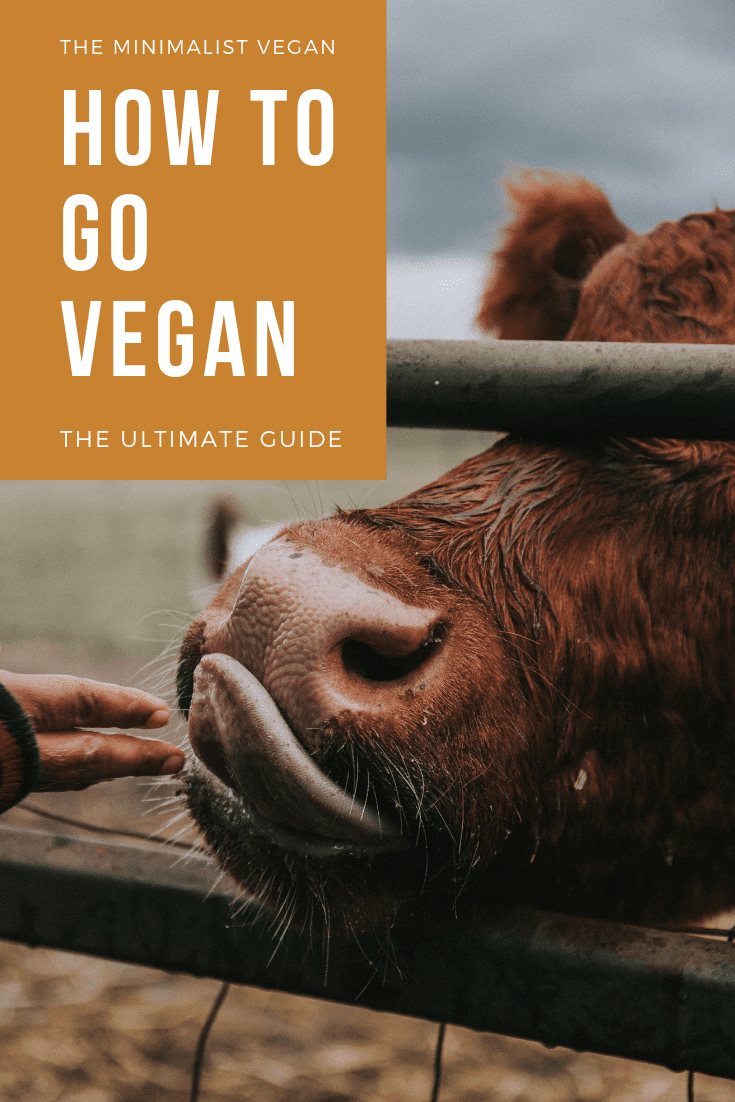
Other posts you’ll love:
- Why You’re Struggling To Stay Vegan
- Is Honey Vegan? The Definitive Guide
- 25 Vegan Beauty Brands To Support (Organic, Fair-Trade and Sustainable)
- Extending The Definition of Veganism
- 17 Topic Ideas To Help You Start a Vegan Blog (As Your Form of Activism)

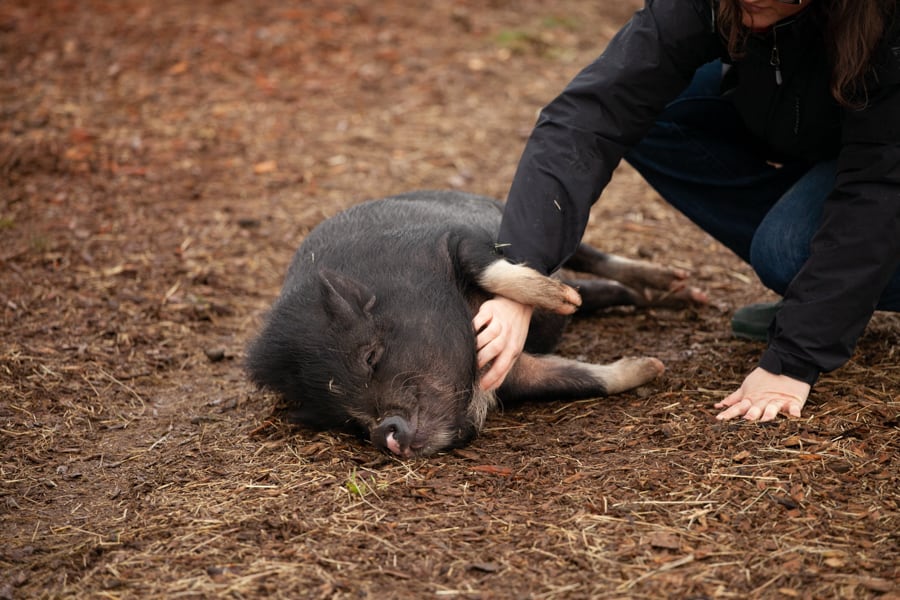
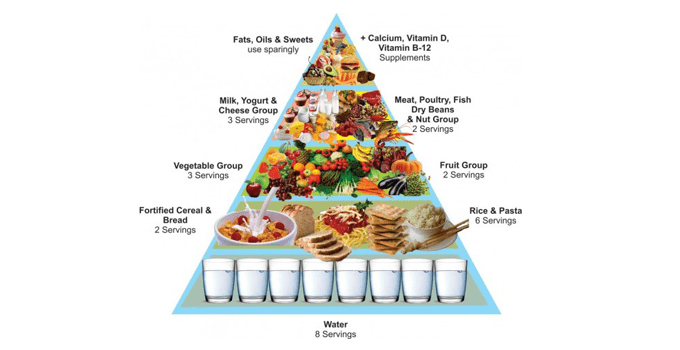
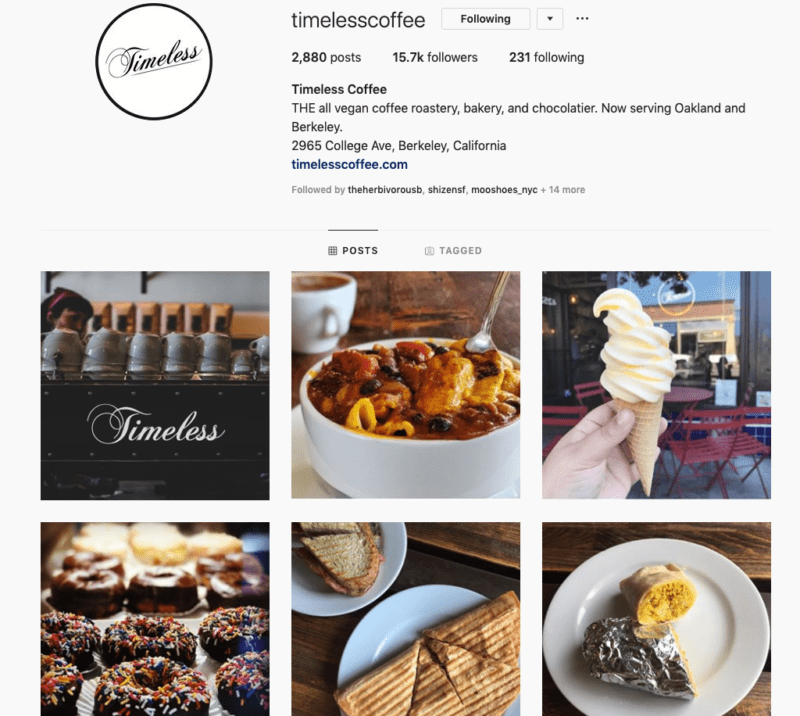
I am number 1 here! I have been thinking about going vegan for a while now. Furthermore, I have been a vegetarian for two years now and don’t eat much cheese nor drink any cow’s milk (I prefer plant-based because of the taste). So, technically, I could consider myself as a flex-vegan. Also, thanks for the tips for all those who struggle when it comes to cooking, I usually feel very uninspired when it comes to preparing food and thinking about recipes. I had the same struggle when I became vegetarian, so I downloaded this app Yazio to prepare me a vegetarian meal plan for the first month. I could also choose between Low Carb, High Protein, gluten-free, etc. – so they have a huge variety of plans and recipes available (https://www.yazio.com/en/food-diary) Have you also tried a meal plan when you became vegan as well? I was thinking about trying out their vegan meal plan option for a month as well. And I need to try out HappyCow for sure, I didn’t even know this app until now. Do you use it, too?
Hi Michael
I decided to eat whole-food, plant based 2 years ago for health reasons and I went all in, no salt, no sugar no oil. In the beginning I found all the meals I made were incredibly bland. . However, after a few weeks I realised my taste buds had changed and I really began to appreciate the real flavours of food. Lost a lot of weight but have now plateaued. Probably because eating too much processed vegan food
Hi Angela, thanks for sharing. It’s incredible to see how the body adjusts!
This is a great guide! Veganism is a long journey that takes just one step at a time. And good food is good food, no matter what’s in it (or isn’t).
I realised I didn’t have to compromise eating my favourite foods when I started incorporating more vegan foods into my diet, and that made it so much easier. Credit so much to http://www.rootedau.com to helping my transition with their plant-based meals!
Thanks for your kinds words and for sharing your resource with us.
Great content, transition is not easy its very hard to change your lifestyle. Surely this blog will help new vegans to transition into #veganlife.
Thanks, Inky! That’s the hope. We appreciate you taking the time to comment.
That’s awesome, William! It must feel good to be so convicted in your decision to switch. Thanks for sharing your overnight experience with us.
Good perspective on Vegan life and thoughtful blog! I am new to the idea of Veganism — as I am fairly mainstream consumer I was ignorant to Vegan lifestyle. Last year I was inspired to stop lying about little things (even though I already considered myself to be honest and ethical). For example, making sure I attributed credit to another person or thinking about if I was saying something (or not saying something) to avoid being judged or hurting someone’s feelings. I think this awareness was liberating and I began to think about what might help make me a kinder person… maybe I should try not eating meat? So far it has been doable with the 6 weeks that I have been experimenting with Vegetarian/Vegan menu for my whole family — something I think has been positive for me with COVID lockdown. Gives me time to think about our health, our world, minimalism, supply chain, and plan proper meals. Approaching Veganism from a curious place rather than a rigid expectation of myself is helping me enjoy and appreciate the process of understanding how a Vegan lifestyle might just be choosing me. I’m being kind to myself about “doing my best” on my journey. Thanks again for great tips and resources!
You’re welcome, Niko. Thank you for taking the time to share your reflections and experimentation with a vegan lifestyle. I like your approach of not being too hard on yourself, especially in the beginning. I hope you’re enjoying cooking vegan food at home with your family 🙂 Michael
Really loved reading this guide – it was sensible and balanced – thank you for the effort you put in to create it! I particularly like the idea of finding a couple of “go to” recipes that are simple and easy to make and then building up from there. Terrific advice.
Hi Gabby, I’m stoked that you got some value from our vegan guide. Ah yes, it makes a huge difference when you have a few recipes you can reliably depend on. Happy holidays!
Thanks for the Guide! It is really epic one.
Thank you 🙂 we tried to create a valuable resource for new vegan—and there’s a lot to think about.